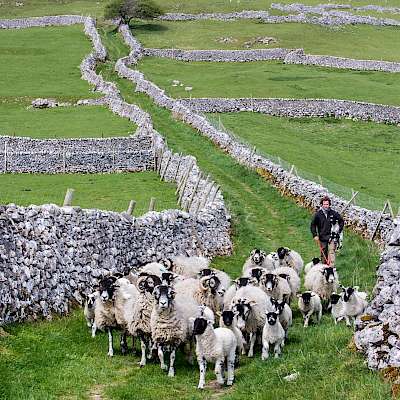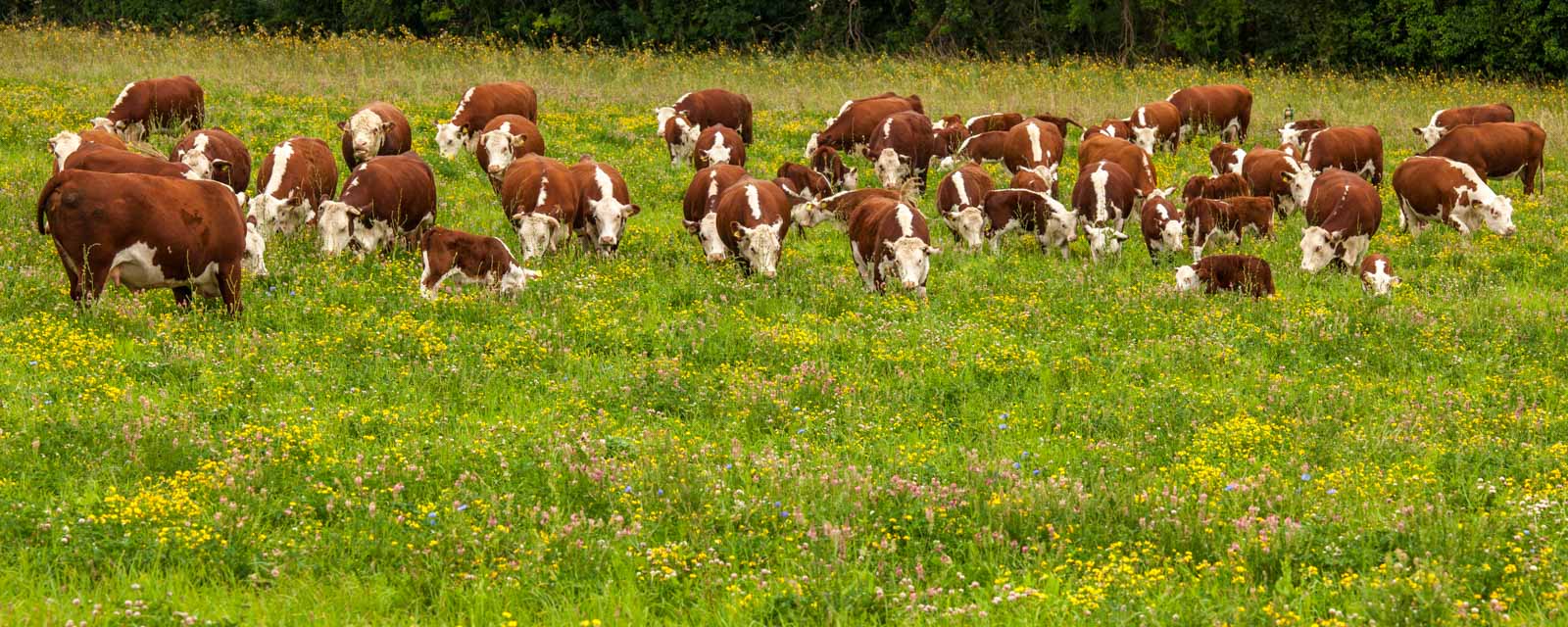Eating Better is calling for a ‘less and better’ approach to meat and dairy production and consumption. However it is not always clear what ‘better’ means in practice.
We recently organised a visit to Romshed Farm in Kent. The visit was arranged for campaigners, researchers and policymakers to see in practice a Pasture for Life certified farm. In this article Sara Gregson from Pasture For Life explains the benefits of this form of farming.
‘Pasture for Life’ meat comes from animals that have only ever eaten fresh or conserved grasses, for their entire lives. Nothing else. No cereal grains or manufactured feeds. Just pasture.
It may surprise some that these days most cattle and some sheep are fed these other feeds to fatten them as quickly as possible, and the production of truly grain-free meat has largely become a thing of the past.
The Pasture-Fed Livestock Association started as a small group of Devon farmers in 2011, supporting farmers who had decided to get off the high-feeding tight-rope and go back to more traditional methods of farming.
Many have changed to native breeds, like Herefords or Aberdeen Angus, and keep their animals in family groups. All are managing their grassland, their greatest natural asset, so that it produces high quality feed for the animals, and builds pasture, which also feeds the soil and the millions of organisms that live within it.
[The herd at Romshed Farm, Kent]
But it also does many other things too. The way their fields are grazed encourages flower-rich meadows, filled with insects, birds and mammals. The animals return nutrients and organic matter back to the ground as they deposit their dung. Permanent pastures capture and store carbon, helping reduce the impact of climate change, whilst retaining rainwater, reducing the impacts of flooding and drought.
The animals are healthier, grazing a natural, varied diet of not only grasses, but herbs and clovers. As a consequence they are less stressed, live longer and are more fertile than conventionally fed livestock.
Clovers also naturally capture nitrogen in the soil which then helps other grasses and plants to grow, without the need for chemical based fertilisers, which are expensive and made from non-renewable sources of energy.
Pasture for Life certification, which guarantees that the farmer has never fed grains to their animals, specifically prohibits feeding soya to animals, much of which has been grown on land cleared of native tropical forest and then imported to the UK. So our farmers are not contributing to the destruction of precious resources elsewhere in the world.
What effect does this way of farming have on farm businesses? When asked, our members say that it lowers costs, because they do not have to buy expensive feed, which helps them make a living. In the likely post-Brexit world of support for ‘public goods’, we feel our farmers should be rewarded for not only their high animal welfare and environmental benefits, but also the human health advantages of eating such nutrient-rich meat.
And what does Pasture for Life meat taste like? We run regular tastings in restaurants across the country and where customers tell us every bit of meat tastes delicious and full of flavour. But, as with fine wines, every piece of Pasture for Life meat tastes different – reflecting what the animal has eaten on its farm – be it the limestone pastures of the Yorkshire Dales, lamb from the salt marshes of the Gower Peninsula, or beef from cattle that have spent their lives amongst the Kentish woodlands.
Not only this, but also moderate amounts of 100% grass-fed beef and lamb have been shown to be a healthier option for humans. Research spanning three decades suggests that pasture-based diets can significantly improve the fatty acid composition and antioxidant content of meat – both good for human health. Studies also suggest they have more vitamin A and E, along with lower total and saturated fat content than meat from grain-fed animals.
At the moment, consumers can buy Pasture for Life meat and dairy products directly from the farmers who produce them. A map on the Pasture for Life website shows where all these are and many deliver nationwide. Every pack of meat can be traced quickly to the farm via a smart phone app or at the website www.pastureforlife.org.
Buying Pasture for Life meat is good for animals, good for farmers, good for the environment, wild flowers and soils, and of course is good for consumers to eat.

